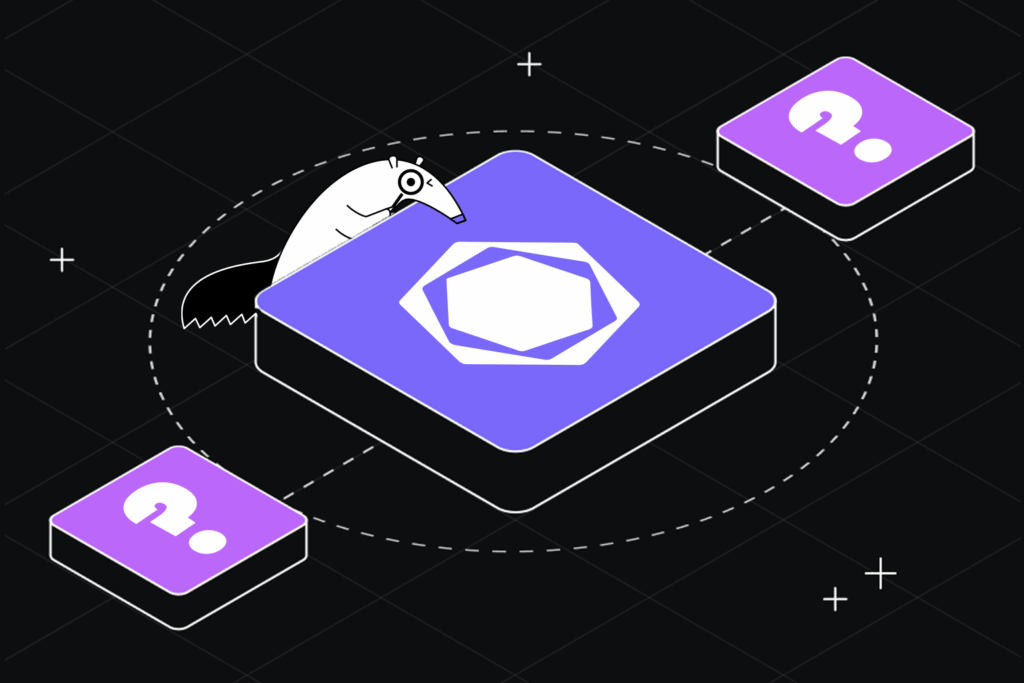The Evolution of Code Refactoring Tools: Harnessing AI for Efficiency
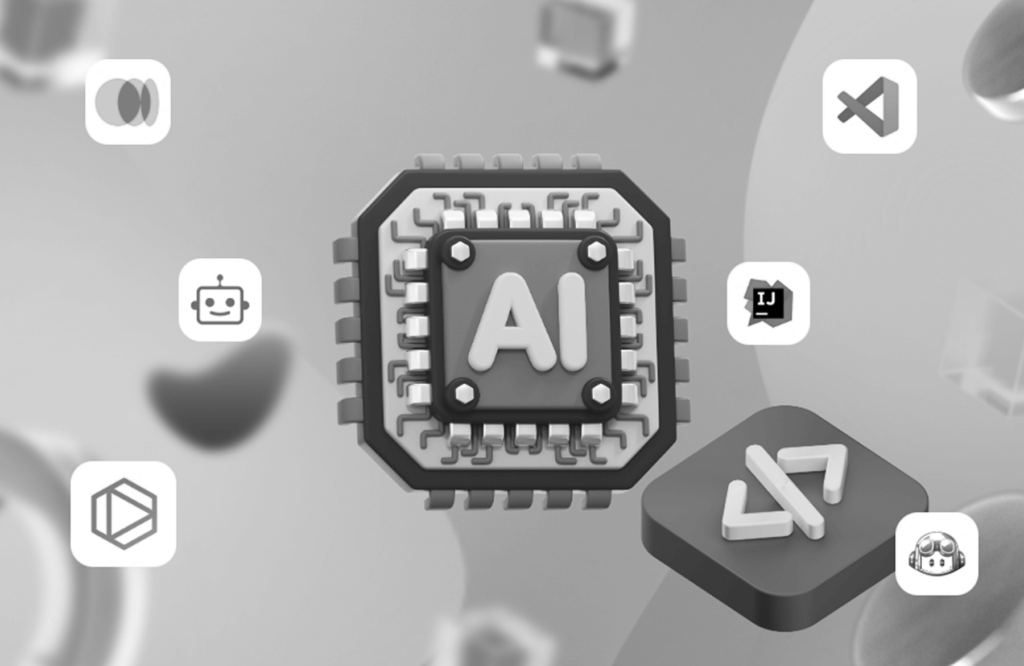

In software development, we all aspire to create clean, elegant, and maintainable code. Yet, as projects grow and evolve, code complexity can quickly become a significant challenge. This is where code refactoring emerges as a critical practice for developers seeking to improve their software’s internal structure without altering its external behavior.
Understanding Code Refactoring: The Basics
Code refactoring is a systematic process of restructuring existing computer code without changing its external functionality. Think of it like renovating a house – the core structure remains the same, but the interior becomes more efficient, organized, and easier to navigate.
“Whenever I have to think to understand what the code is doing, I ask myself if I can refactor the code to make that understanding more immediately apparent.”
– Martin Fowler, Refactoring: Improving the Design of Existing Code
Key Objectives of Code Refactoring
In this section, we will understand some of the key objectives of code refactoring and why it is important.
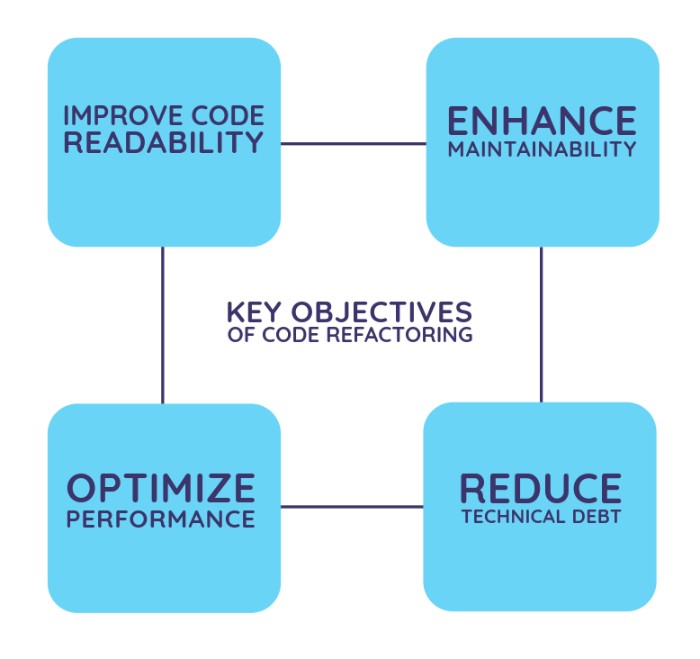
Let’s look at some code refactoring objectives:
- Improve code readability: Make code more understandable for developers.
- Enhance maintainability: Reduce complexity, making future modifications easier.
- Optimize performance: Streamline code to improve efficiency.
- Reduce technical debt: Address potential issues before they become significant problems.
The Evolution of Code Refactoring Tools
Let’s look at the evolution of code refactoring step by step. Initially, it was a manual, time-consuming process where developers meticulously reviewed and restructured code line by line. Then, advanced features were introduced in IDEs and development tools, followed by the integration of AI into the process.
Traditional Refactoring Approaches
1. Manual refactoring:
- Developers manually identify and modify code structures.
- Time-intensive and prone to human error.
- Requires deep understanding of the codebase.
2. IDE-assisted refactoring:
- Integrated development environments like Visual Studio and IntelliJ IDEA introduced semi-automated refactoring.
- Provided tools for renaming variables, extracting methods, and reorganizing code.
- Reduced manual effort but still required significant human intervention.
Refactoring Tools in Modern Development Environments
Visual Studio Code: Streamlining Code Transformation

Visual Studio Code offers robust code refactoring capabilities that empower developers to improve their codebase efficiently. The IDE provides advanced refactoring operations that allow developers to restructure code seamlessly within the editor.
Key Refactoring Features:
- Eliminates code duplication by creating shared methods or functions.
- Language-specific refactoring support for TypeScript and JavaScript.
- Extensible refactoring capabilities through additional language service extensions.
- Intuitive code actions with preview functionality.
Developers can use VS Code’s intelligent refactoring tools to rename symbols across multiple files, extract complex code segments into separate methods, move code blocks with automatic reference updates, and review potential changes before implementation.
IntelliJ IDEA: Comprehensive Code Transformation

IntelliJ IDEA stands out as a powerful development environment with sophisticated code refactoring techniques that support multiple programming languages, including Java, JavaScript, and Python.
Advanced Refactoring Capabilities:
- Cross-language refactoring support.
- Automatic method and variable extraction.
- Smart code completion and suggestion systems.
- Built-in static code analysis.
- Intelligent code movement and reorganization.
The IDE goes beyond basic refactoring by providing context-aware code suggestions, minimizing potential errors during code transformation, offering real-time optimization recommendations, and supporting complex refactoring across different frameworks.
[blog-subscribe]
The Importance of Choosing the Right Refactoring Tool
Selecting an appropriate refactoring tool depends on:
- Your primary programming language.
- Project complexity.
- Specific refactoring requirements.
- Integration with existing development workflows.
Each tool offers unique strengths, and developers should evaluate their specific needs when choosing a refactoring solution. The goal remains consistent: creating more readable, maintainable, and efficient code.
AI’s Role in Modern Code Refactoring
The emergence of AI for code refactoring has revolutionized the field, offering unprecedented capabilities in automated code transformation. Machine learning algorithms can now analyze complex codebases and suggest or implement refactoring strategies with remarkable accuracy.
Key AI-Powered Refactoring Techniques
- Automated code analysis: AI tools can scan entire codebases, identifying potential refactoring opportunities.
- Intelligent suggestions: Recommending more efficient code structures.
- Predictive maintenance: Identifying potential issues before they manifest.
- Context-aware refactoring: Understanding the broader context of code modifications.
AI Code Refactoring Tools
Qodo Gen: AI Coding Assistant
Qodo (formerly Codium) employs advanced AI models to analyze your code’s structure, logic, and context, providing invaluable insights to help you write cleaner, more efficient code. This tool is specifically designed to enhance code refactoring and streamline your development workflow.
With Qodo Gen, you can:
- Enhance code quality: Optimize and refactor code for better performance and readability.
- Uncover potential bugs: Identify hidden issues before they escalate.
- Simplify PR reviews: Make pull requests easier and more efficient to manage.
- Generate unit tests and docstrings: Improve maintainability and secure your code through automated documentation and testing.
Qodo Gen is designed with developer convenience in mind. Users can easily access the tool by clicking the Qodo Gen logo in their Extensions bar, providing instant access to powerful AI-driven development assistance. Qodo is a very easy-to-use tool with a number of valuable benefits.
GitHub Copilot
GitHub Copilot uses AI to assist developers by suggesting code improvements and offering real-time refactoring recommendations. Seamlessly integrated with popular development environments like Visual Studio Code, it acts as an AI-powered pair programmer, helping you write better code faster.

When you install Copilot in Visual Studio Code, two extensions enhance your coding experience:
- GitHub Copilot Extension: Offers inline code suggestions as you type, enabling smooth and efficient coding.
- GitHub Copilot Chat Extension: A conversational AI tool that allows you to ask questions, troubleshoot issues, or seek guidance on complex coding tasks.
With Copilot, developers can generate code snippets, fix errors, refactor methods, add error handling, or even understand intricate algorithms-all without leaving the editor. Simply typing or asking questions via chat lets you stay in the coding flow and apply AI-driven suggestions directly to your code.
Additionally, Copilot’s autocomplete-style suggestions adapt to your coding patterns. If you need a specific solution, providing a natural language comment can guide Copilot in generating tailored code, making it an invaluable tool for improving productivity and streamlining the development process.
CodePal: AI-Powered Refactoring Assistant
CodePal represents a modern approach to automated code refactoring, combining cloud-based technology with intelligent analysis.
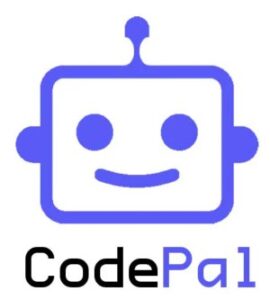
Innovative Refactoring Features:
- Multi-language code generation.
- Real-time code optimization suggestions.
- Automated code review and improvement.
- Code simplification tools.
- Visual code structure analysis.
CodePal distinguishes itself through AI-driven code analysis, automated identification of potential improvements, seamless code restructuring recommendations, and support for various refactoring operations.
Tabnine
Tabnine is an AI coding assistant designed to predict and generate code completions in real time. It also offers automated code refactoring suggestions tailored to the context of your project, helping developers write cleaner, more efficient code.

Tabnine’s in-IDE chat feature allows developers to interact with an AI agent using natural language for assistance with a variety of coding tasks, such as:
- Generating new code and unit tests.
- Providing relevant answers to coding queries.
- Referencing and explaining code from your workspace.
- Extending existing code with new functionality.
- Refactoring code for better structure and readability.
This tool supports development teams of all sizes by simplifying the software development process using AI, while ensuring privacy, security, and compliance. Tabnine enhances productivity, improves code quality, and streamlines workflows, making coding more efficient and enjoyable. Trusted by over a million developers across various industries, Tabnine is a reliable solution for modern software teams.
Benefits of Automated Code Refactoring
Automated code refactoring offers several advantages that enhance the software development process:
- Significant time savings: Automated tools streamline the refactoring process, allowing developers to focus on more complex tasks.
- Reduction in human error: Automation minimizes the risk of introducing errors during refactoring, leading to more reliable code.
- Consistent code quality: Automated refactoring ensures uniform application of coding standards across the codebase.
- Faster identification of potential issues: Automated tools can quickly detect and address code smells and potential bugs.
- Improved overall software maintainability: Regular automated refactoring keeps the codebase clean and adaptable to future changes.
Best Practices for Effective Code Refactoring
To maximize the benefits of code refactoring, consider the following best practices:
- Start small: Begin with targeted, incremental refactoring to manage complexity and reduce risk.
- Maintain comprehensive test coverage: Ensure existing tests validate code behavior, providing a safety net during refactoring.
- Use version control: Track changes and enable easy rollback if necessary, preserving code integrity.
- Collaborate and review: Discuss refactoring strategies with team members to gain diverse perspectives and improve outcomes.
- Continuous learning: Stay updated on the latest AI-powered refactoring techniques and tools.
By following these best practices, you can ensure that your code refactoring process remains efficient, risk-free, and aligned with the latest development trends.
Looking Ahead: The Future of Code Refactoring
As artificial intelligence continues to advance, we can anticipate the emergence of even more sophisticated code refactoring tools. These AI-driven solutions will provide nuanced, context-aware suggestions tailored to specific code scenarios, ensuring greater relevance and effectiveness. By analyzing vast repositories of code, they will identify patterns and recommend improvements based on historical data.
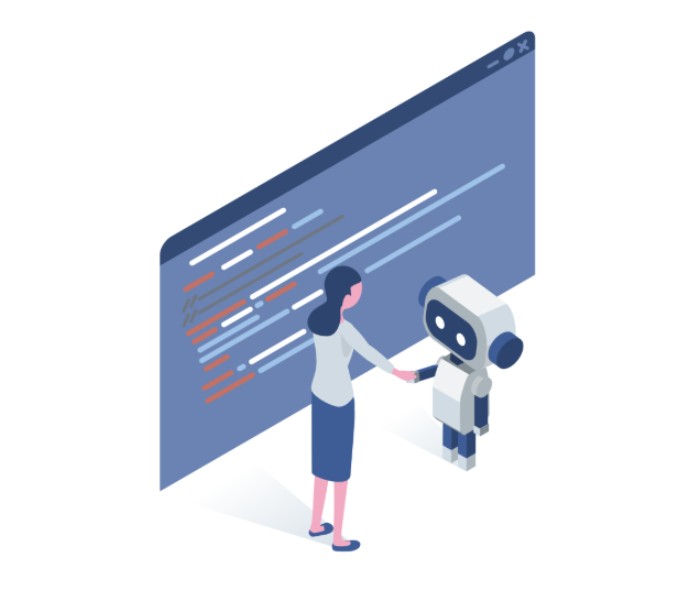
Additionally, AI tools are expected to offer predictive maintenance capabilities, proactively anticipating potential issues and suggesting refactoring strategies to prevent future problems. With ongoing advancements, these tools may even automate complex refactoring tasks with minimal human intervention, significantly enhancing efficiency and streamlining development processes. Embracing these advancements will empower developers to maintain high-quality, adaptable codebases, ensuring software remains robust and scalable in an ever-evolving technological landscape.
Conclusion
Code refactoring has evolved significantly, shifting from a manual, labor-intensive process to a more intelligent, AI-driven practice. With the advent of advanced AI tools, developers can now streamline refactoring, improving the quality and efficiency of their software systems. These tools help automate many tedious tasks, reducing the time spent on routine improvements and allowing developers to focus on higher-level design and innovation.
Embracing AI-powered code refactoring is not just about improving the code itself; it’s about giving developers the freedom to focus on what truly matters-innovating, solving complex problems, and creating value. By using these advanced techniques, developers can enhance the maintainability and scalability of their software, ensuring long-term success.

